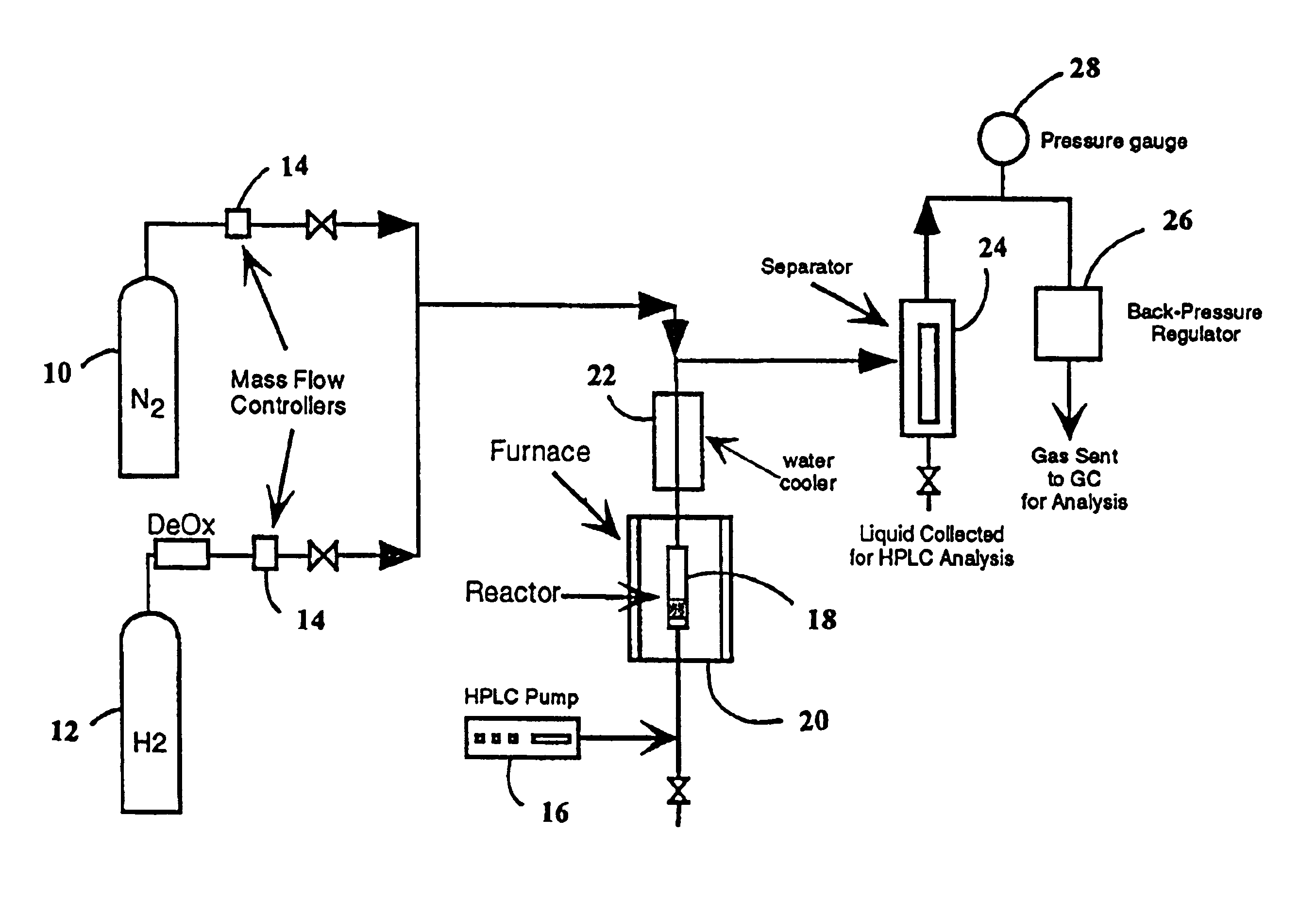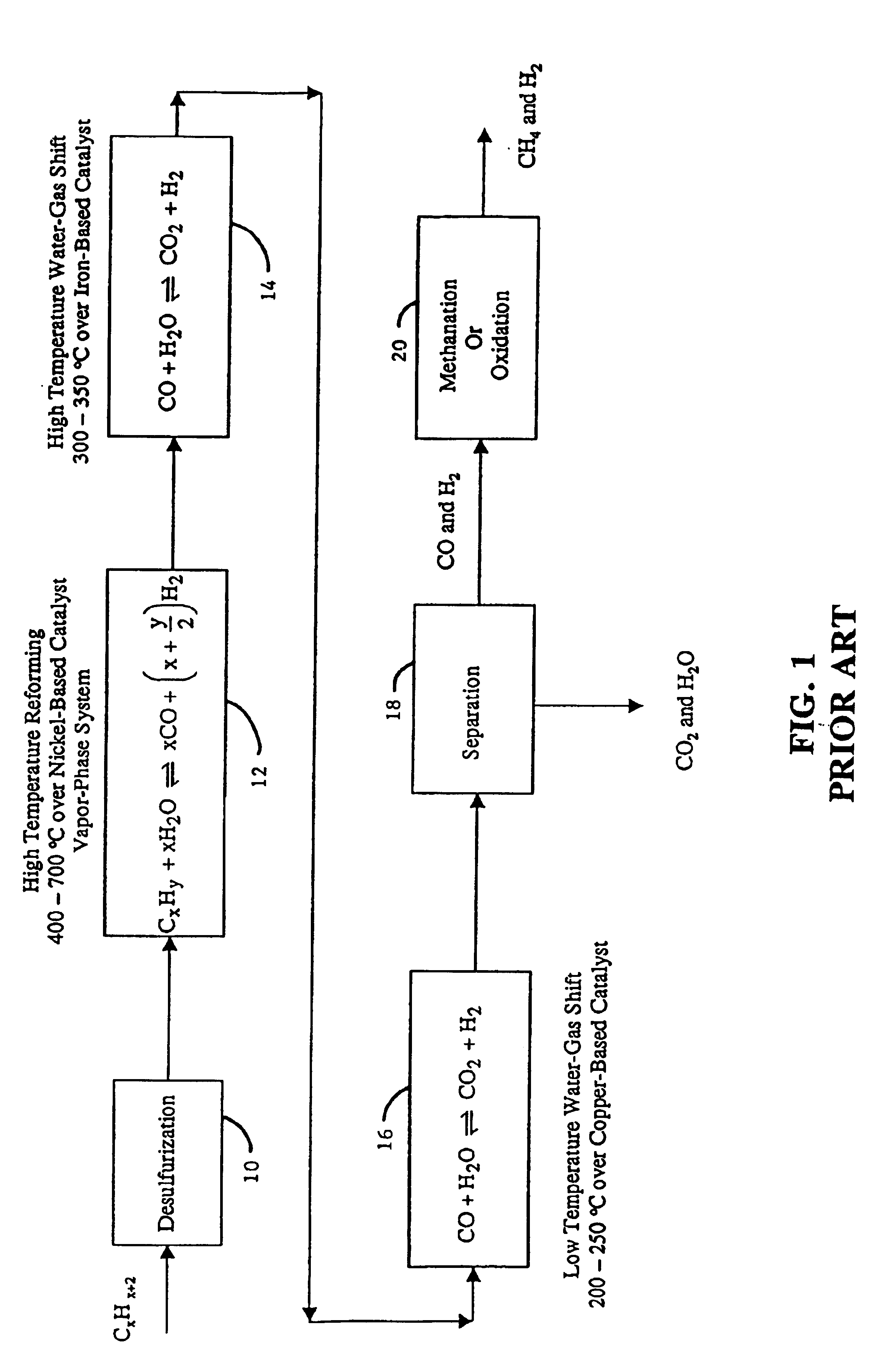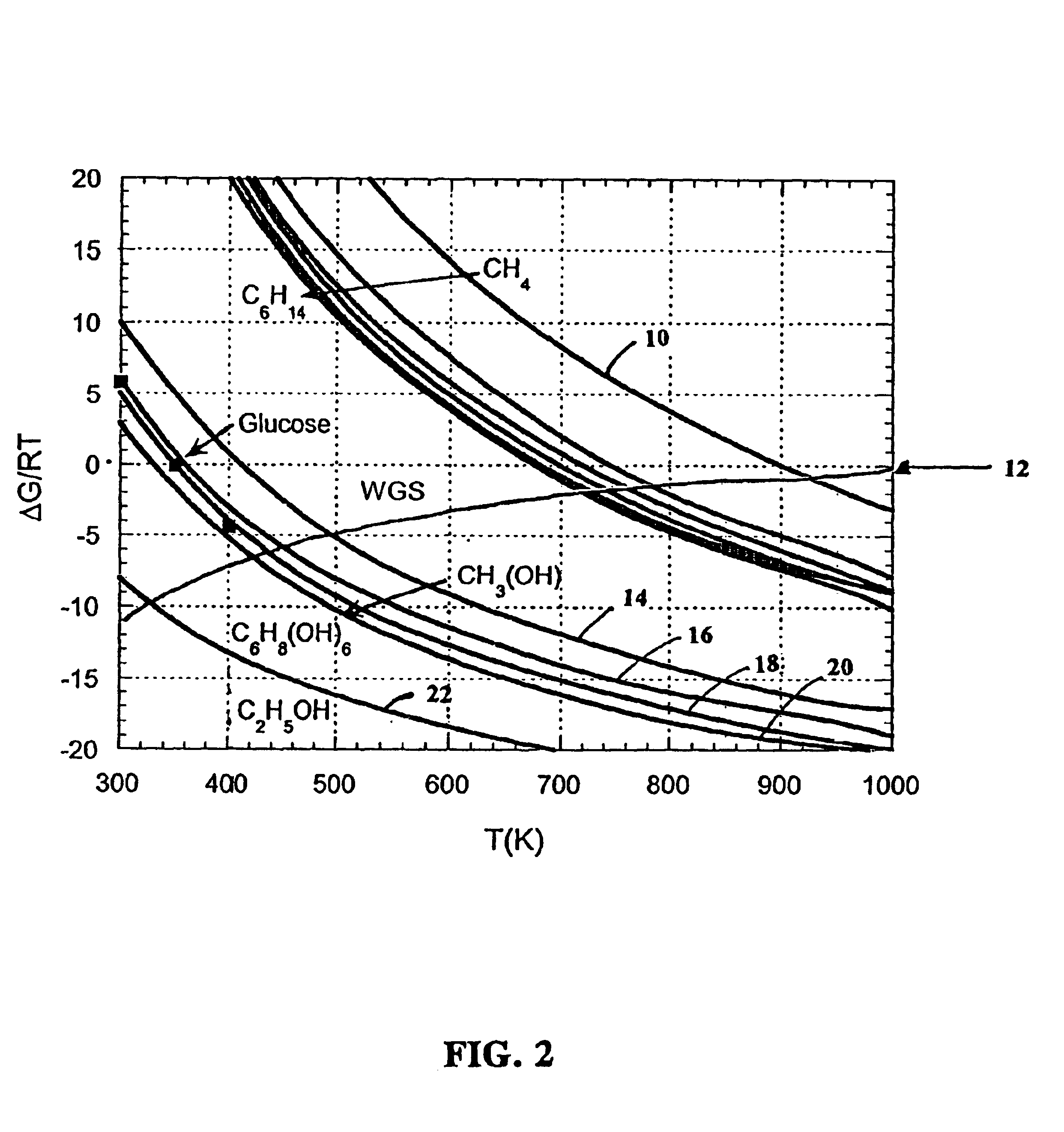Low-temperature hydrogen production from oxygenated hydrocarbons
a technology of oxygenated hydrocarbons and hydrogen production, which is applied in the direction of electrochemical generators, bulk chemical production, chemistry apparatus and processes, etc., can solve the problems of reducing the net rate of carbon dioxide production, high energy costs, and low environmental impact, so as to reduce the amount of energy that must be input into the claimed method to yield hydrogen, the effect of less danger and reduced energy costs
- Summary
- Abstract
- Description
- Claims
- Application Information
AI Technical Summary
Benefits of technology
Problems solved by technology
Method used
Image
Examples
example 1
[0111]Silica-supported metal catalyst systems were prepared using an evaporative impregnation technique according to the following procedure: (1) Cab-O-Sil EH-5 fumed silica (Cabot Corporation, Woburn, Mass.) was dried for 24 hours at 393 K; (2) a solution containing the metal catalyst was added to the silica; and (3) the resulting catalyst was dried in air.
example 2
[0112]A 4 wt % silica-supported ruthenium catalyst system Ru / SiO2) was prepared according to the general method of Example 1. A ruthenium (III) nitrosyl nitrate solution (1.5 wt % ruthenium solution) was added to the dried silica to produce a 4 wt % Ru / SiO2 catalyst system. The mixture was stirred at room temperature for 30 minutes in an evaporation dish followed by heating to remove the excess liquid. The resulting catalyst system was then dried at 393 K in air overnight, and was then stored until testing.
example 3
[0113]A 4 wt % silica-supported palladium catalyst system (Pd / SiO2) was prepared according to the general method described in Example 1. A 10 wt % tetraamine palladium nitrate solution was diluted with water and then added to the dried silica to form a gel upon stirring. The gel was dried at room temperature for one day and further dried at 393 K overnight. The resulting Pd / SiO2 catalyst system was then calcined in O2 at 573 K for 3 hours.
PUM
 Login to View More
Login to View More Abstract
Description
Claims
Application Information
 Login to View More
Login to View More - R&D
- Intellectual Property
- Life Sciences
- Materials
- Tech Scout
- Unparalleled Data Quality
- Higher Quality Content
- 60% Fewer Hallucinations
Browse by: Latest US Patents, China's latest patents, Technical Efficacy Thesaurus, Application Domain, Technology Topic, Popular Technical Reports.
© 2025 PatSnap. All rights reserved.Legal|Privacy policy|Modern Slavery Act Transparency Statement|Sitemap|About US| Contact US: help@patsnap.com



